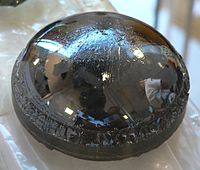
Growing continuous zinc oxide layers with reproducible nanostructures on the seeded alumina substrates using spray pyrolysis
Sign Up to like & getrecommendations! Published in 2020 at "Ceramics International"
DOI: 10.1016/j.ceramint.2019.12.088
Abstract: Abstract The growth of zinc oxide thin films with controlled nanostructures on the heat resistant dielectric substrates is important for the fabrication of gas sensors, transparent electric heating elements, pyroelectric electron emitters, and many other… read more here.
Keywords: alumina substrates; spray pyrolysis; zinc; zinc oxide ... See more keywords

Chemistry of extracting high-contrast invisible fingerprints from transparent and colored substrates using a novel phosphorescent label
Sign Up to like & getrecommendations! Published in 2018 at "Analytical Methods"
DOI: 10.1039/c7ay02713c
Abstract: Traditionally used fluorescent powders for developing invisible (latent) fingerprints involve complicated operation and show characteristics of auto-fluorescence interference and high toxicity. To overcome these serious drawbacks we report a novel application and facile methodology to… read more here.
Keywords: high contrast; chemistry; substrates using; phosphorescent label ... See more keywords

Continuous synthesis of aligned carbon nanotube arrays on copper substrates using laser-activated gas jet
Sign Up to like & getrecommendations! Published in 2018 at "Applied Physics Letters"
DOI: 10.1063/1.5052283
Abstract: A method has been developed for continuous synthesis of carbon nanotube (CNT) arrays on large-area metal substrates using a reactor that moves above the substrate surface with a given scan rate. The reagent vapors pass… read more here.
Keywords: continuous synthesis; carbon nanotube; synthesis; substrates using ... See more keywords

Surface nanostructuring of alkali-aluminosilicate Gorilla display glass substrates using a maskless process
Sign Up to like & getrecommendations! Published in 2022 at "Nanotechnology"
DOI: 10.1088/1361-6528/ac5a81
Abstract: This paper reports on the formation of moth-eye nanopillar structures on surfaces of alkali-aluminosilicate Gorilla glass substrates using a self-masking plasma etching method. Surface and cross-section chemical compositions studies were carried out to study the… read more here.
Keywords: glass substrates; substrates using; alkali aluminosilicate; aluminosilicate gorilla ... See more keywords

Novel SMD Component and Module Interconnection and Encapsulation Technique for Textile Substrates Using 3D Printed Polymer Materials
Sign Up to like & getrecommendations! Published in 2023 at "Polymers"
DOI: 10.3390/polym15112526
Abstract: Nowadays, a range of sensors and actuators can be realized directly in the structure of textile substrates using metal-plated yarns, metal-filament yarns, or functionalized yarns with nanomaterials, such as nanowires, nanoparticles, or carbon materials. However,… read more here.
Keywords: textile; textile substrates; encapsulation; interconnection ... See more keywords